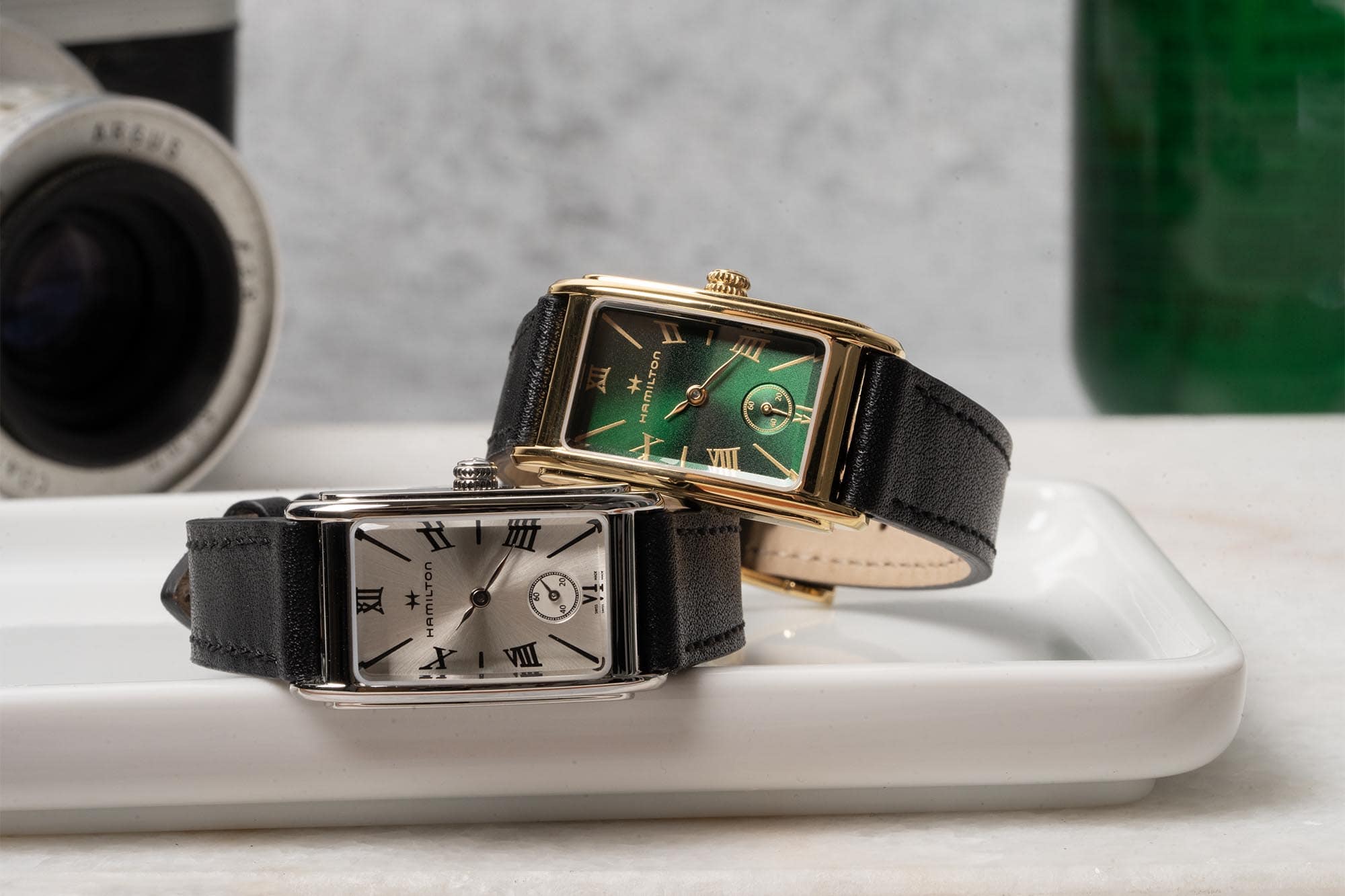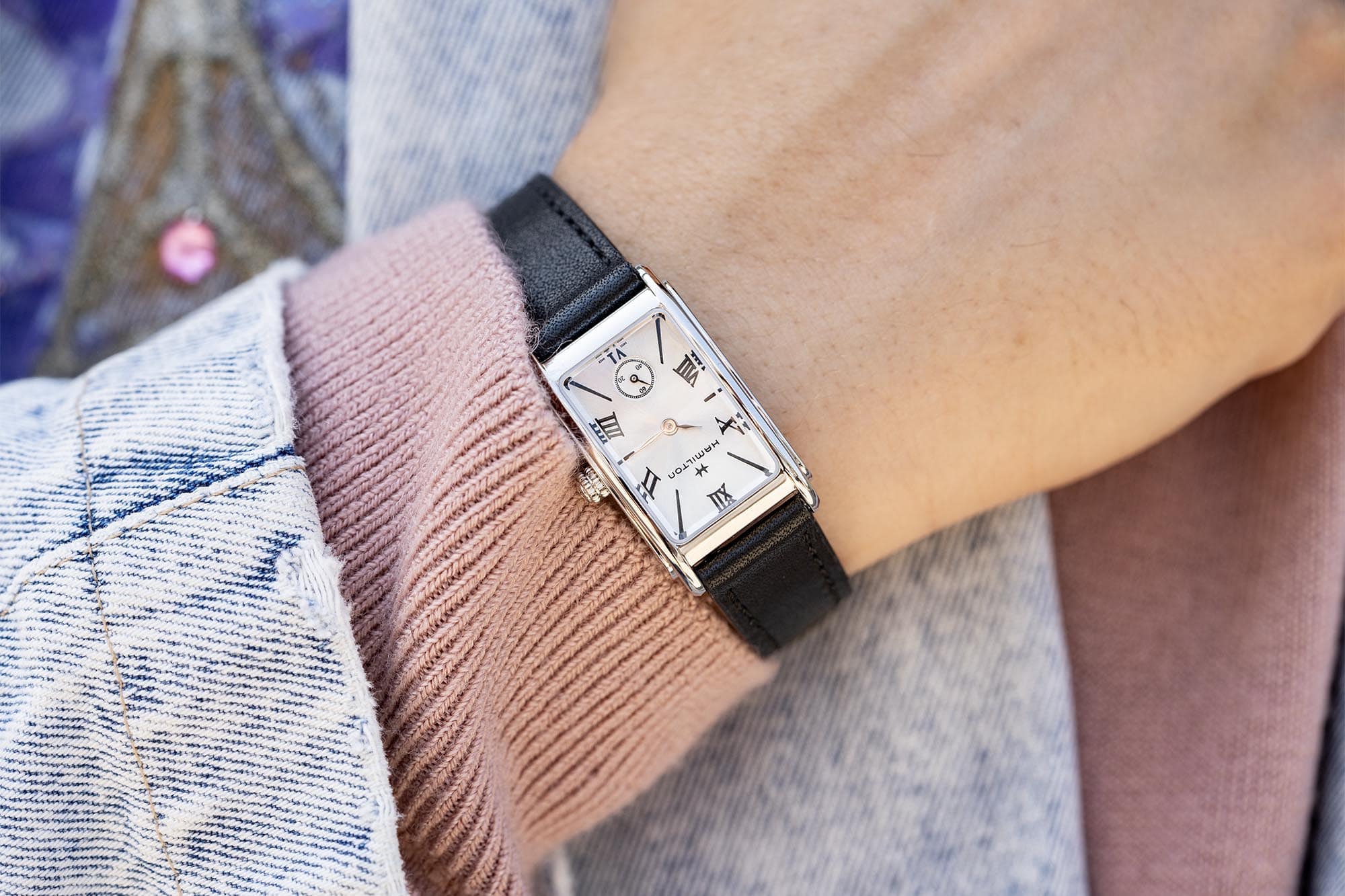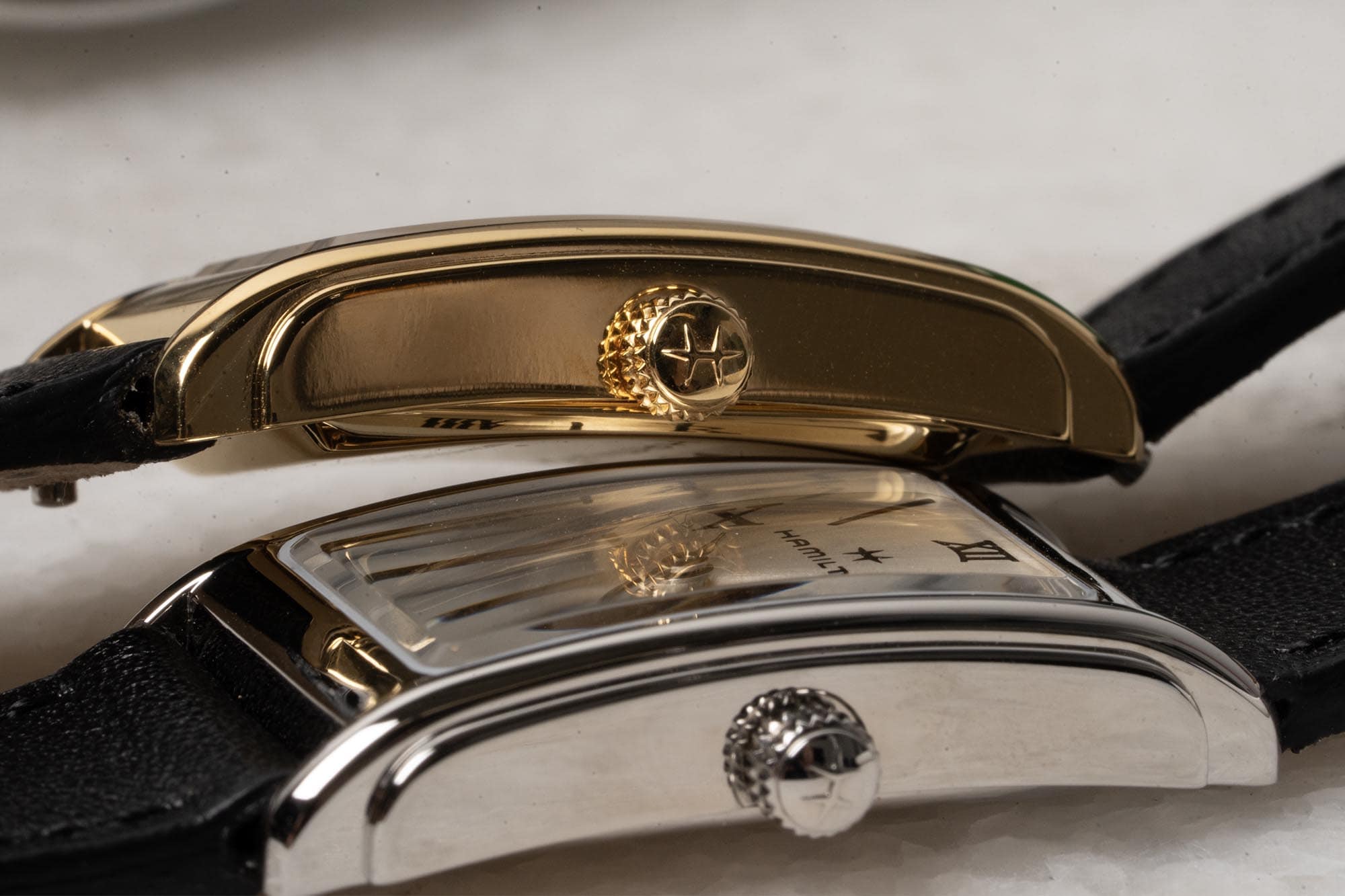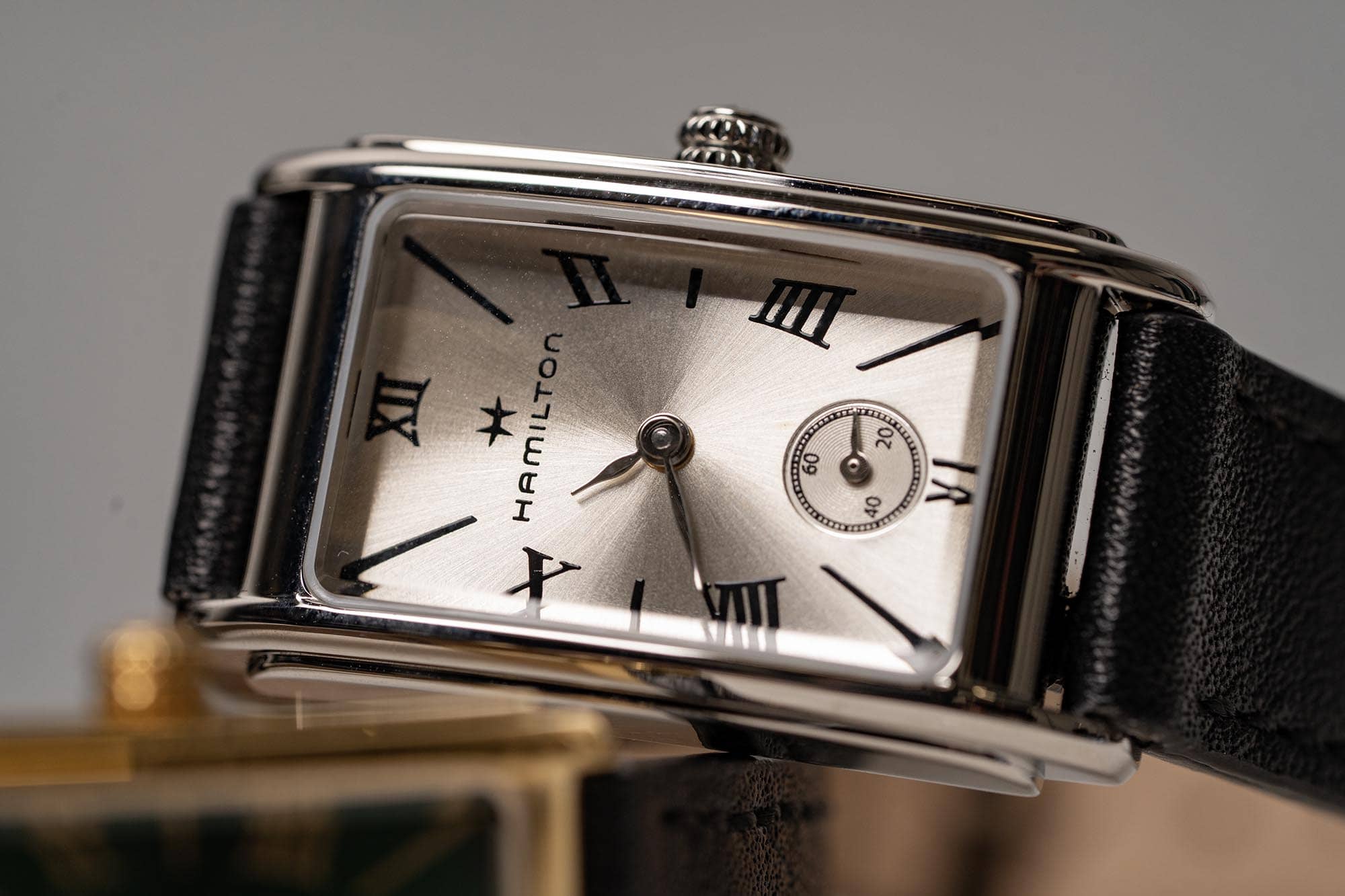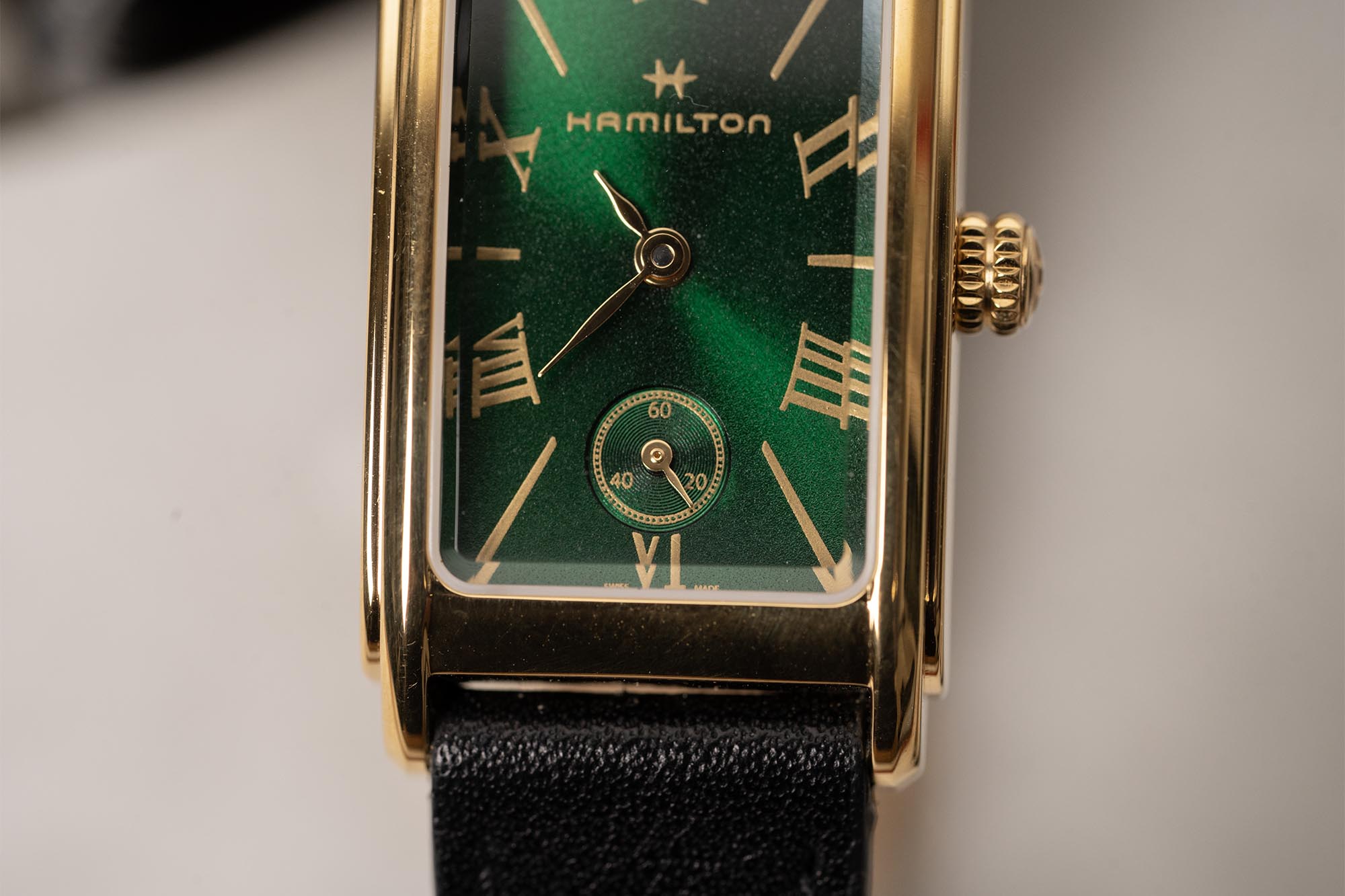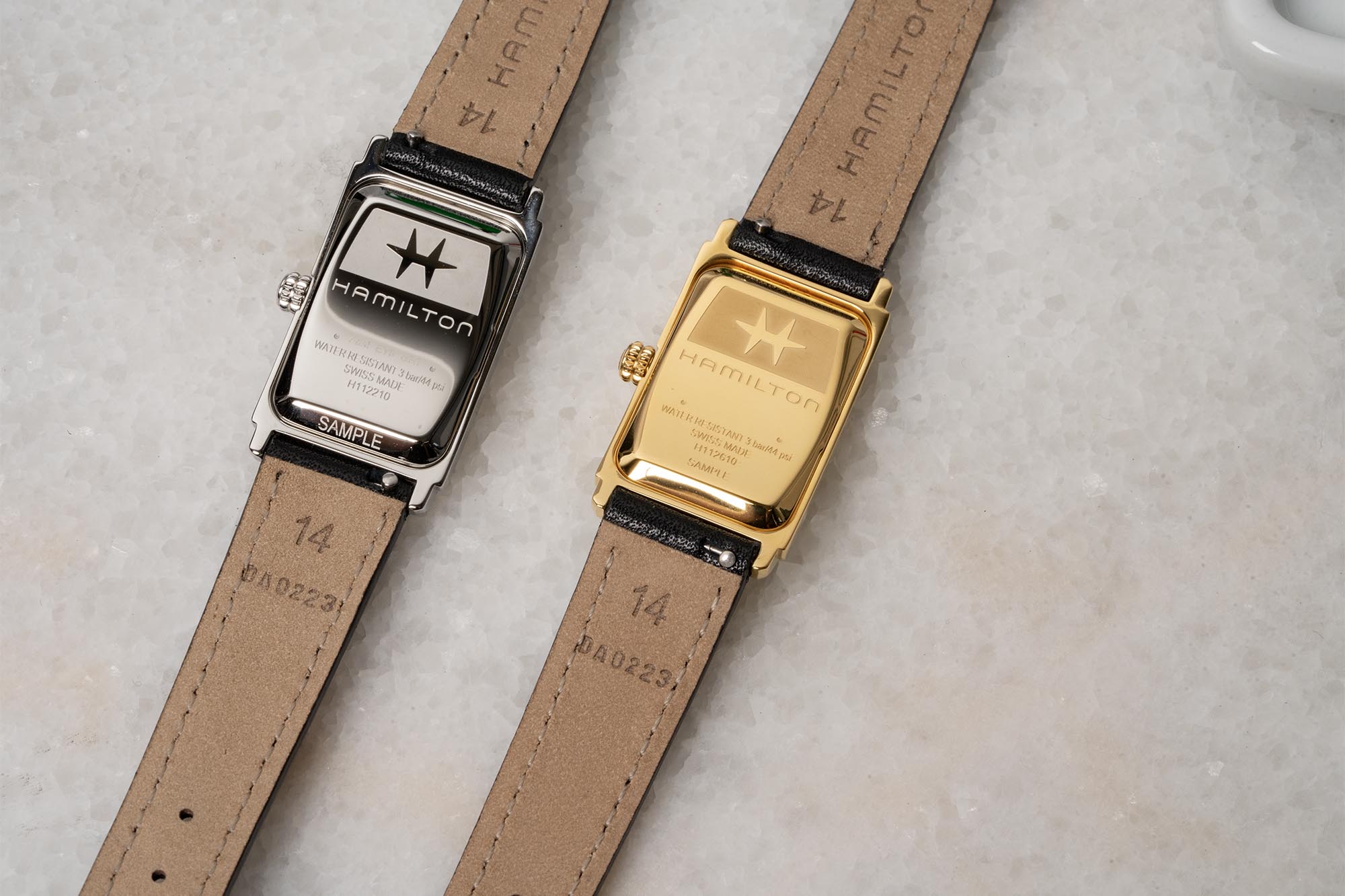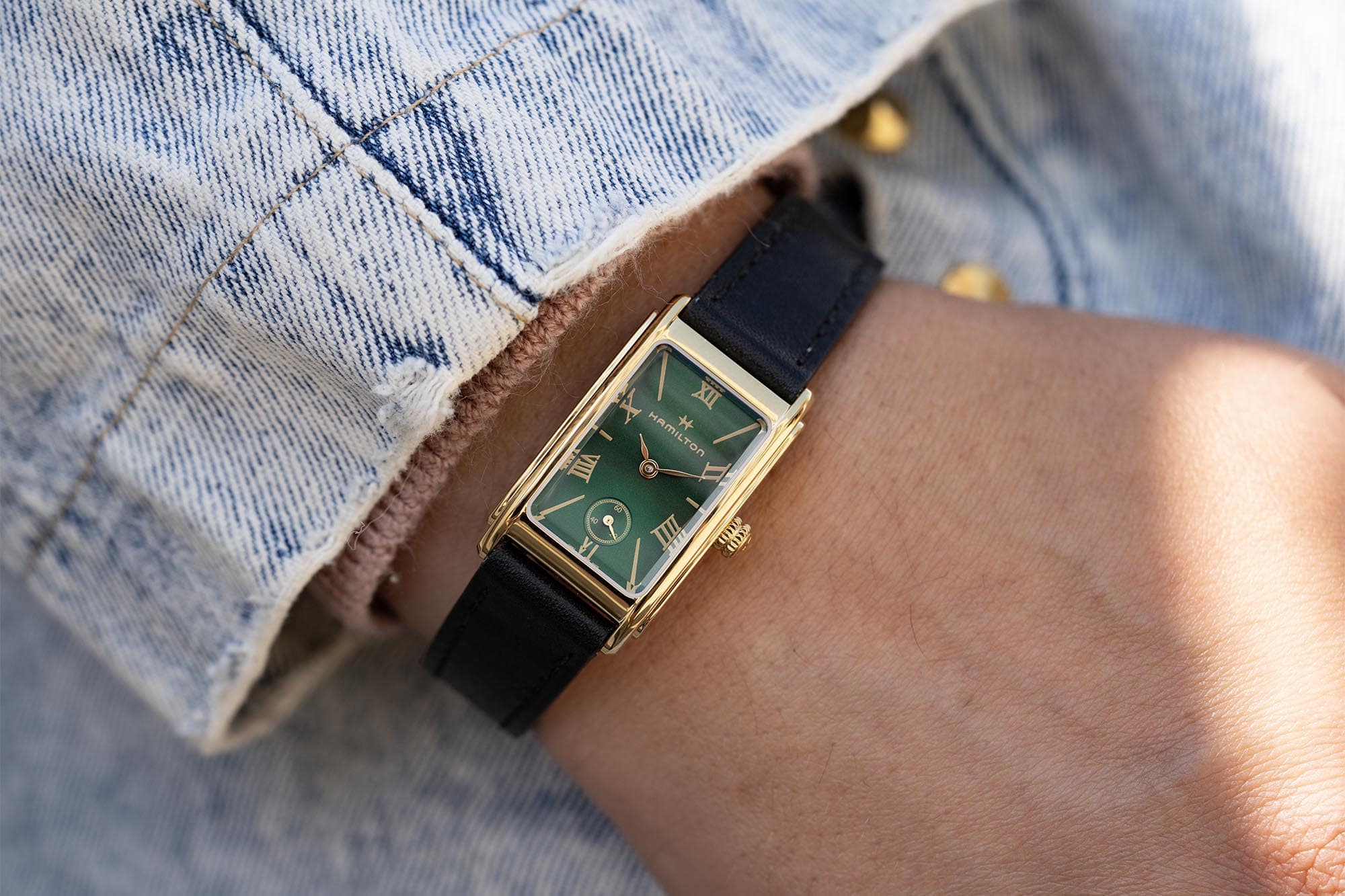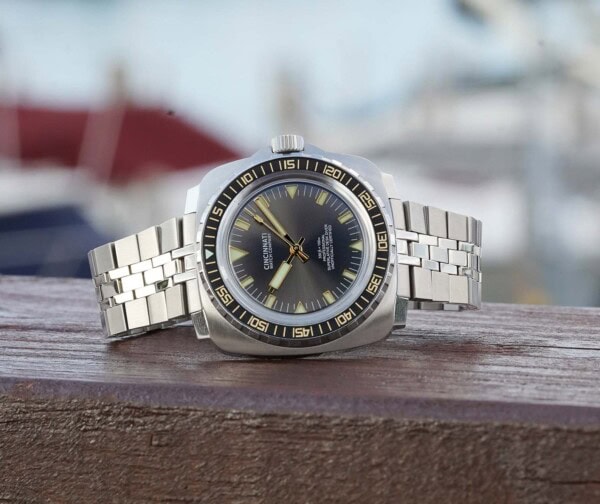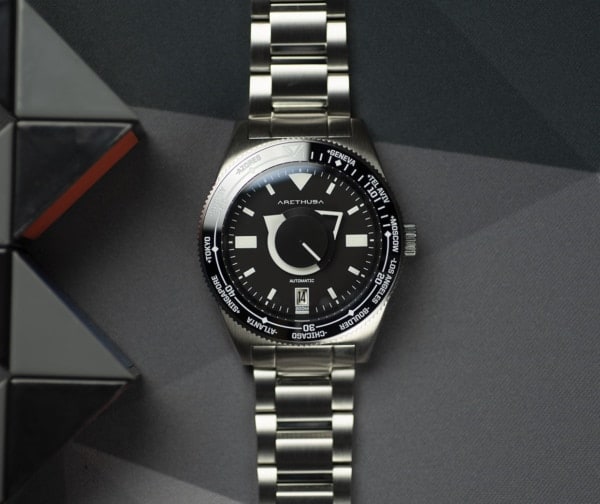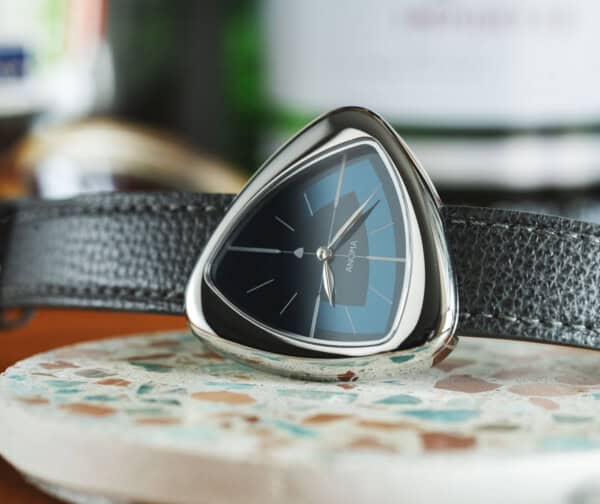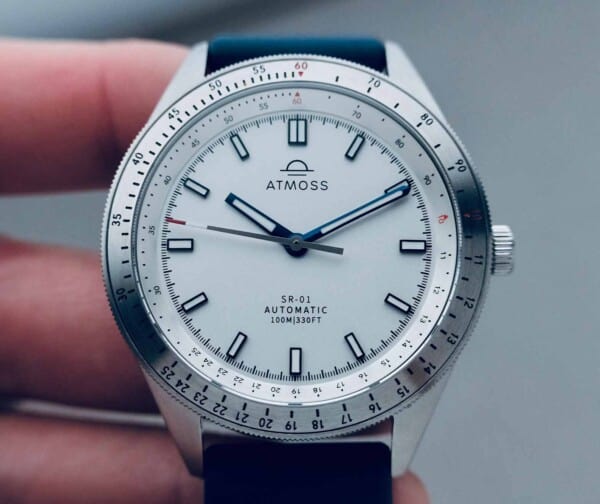The Hamilton American Classic Ardmore Small is, quite simply, an absolute beauty on the wrist. I had the gold/green option (reference H11261760) and the all-silver option (reference H11221550). Both watches are stainless steel, though the green dial has a yellow gold PVD coating. The rectangular case measures 19mm x 27mm. The diameter, coupled with a height of just 6.9mm makes the Ardmore a lovely and modest little thing. The case is slightly curved throughout, a trait of the 1935 original, which means it sits flush against the wrist.
![]()
Both the gold and silver dials have a sunburst finish under a mineral crystal. Each of them feature Roman numerals at the even hours and stick indices at the odds. Small leaf hands mark the hour and minute, color matched to their cases. There is a running-seconds subdial (with Arabic numerals) indicating the twenty, forty, and sixty second intervals with the one “tick” per second common with quartz-based movements – the Ardmore is powered by the ETA Caliber 980.163. The subdial is slightly recessed, adding a sense of dimension to an otherwise flat affect, and is nicely framed by a railroad seconds track.
![]()
A unique detail is the Hamilton stamped double “onion” crown at the three o’clock position. Though the original Ardmore had a flat fluted crown, this design is reminiscent of vintage aviator watches of the time period. Since the case is otherwise unadorned, allowing the dial to steal the show, the detailing on the crown gives the overall design a classy touch and complements the dial.
![]()
The 14mm strap looked almost comical on me, with my 20mm summer tan line only now beginning to fade. The matte black strap is cow leather with color-matched stitching along the sides. It was surprisingly comfortable. Further, the sizing is great for someone with small wrists. The watch was sized at the middle option on my wrist, and it appeared from the remaining available choices that this strap would be best suited to someone with wrists under 6.5 inches. The strap features quick-release spring bars, so swapping it for something longer, if needed, would be easy.
The water resistance is a respectable 3 bar/30m. This isn’t really the type of watch one should be trying to swim with, anyhow. Though I made a point to avoid getting water on the leather strap, I was never concerned about the water resistance of the watch as I went about my daily activities.
![]()
The whole package is delicate and understated. It’s Art Deco meets modern fashion in the best way. My only pain point with the watch was the legibility. With small watches come small markers. Though it is easy enough to get one’s bearings at the obvious intervals of five, the lack of a minute track makes it tough to orient oneself with any real accuracy. Part of the difficulty also lies in the size of the hands which are miniscule when compared to the Roman numerals and indices. However, total accuracy doesn’t seem to be the objective of a watch like this and didn’t necessarily detract from my enjoyment of the Ardmore in any meaningful way. Though I think it’s worth noting for anyone who ranks legibility highly in a list of considerations.
![]()
Overall, this would be a positive addition to the collection of Hamilton fans, the smaller-wristed, or just the generally fashion-savvy enthusiast who wants a piece they can wear in style. The silver dial option is currently priced at $495 and the green dial at $545. More information can be found on the brand’s website.
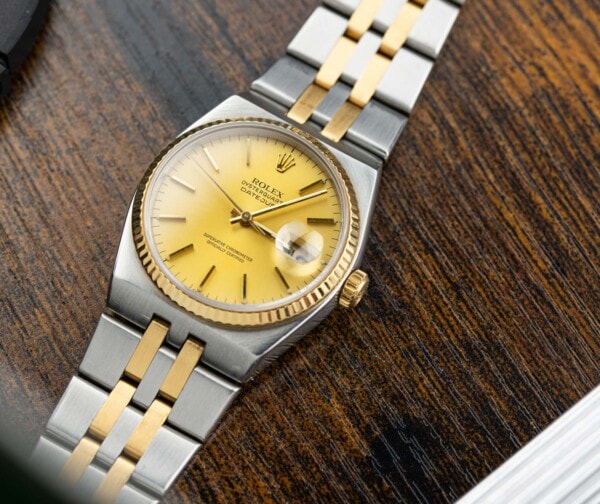








 Featured Videos
Featured Videos




